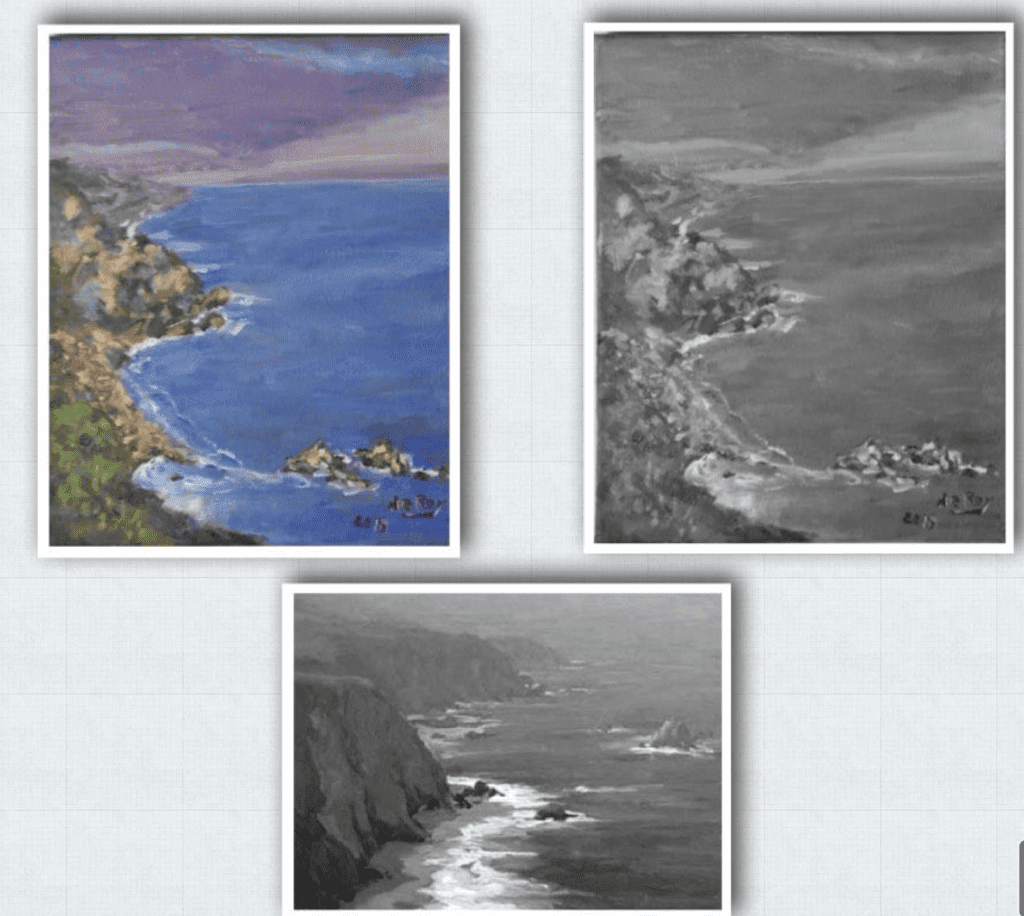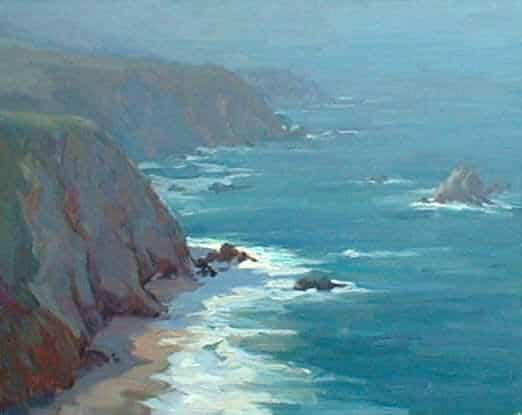How To Paint Water

When you are painting a body of water there is one thing that most beginners miss. The end result is a lake or ocean that just doesn’t look right. It looks more like a vertical wall than a flat body of water.
The thing students often miss when learning how to paint water is the value change in the water as the water gets further away from you.
Here is a student painting at top left. In order to see the problem it is best to convert the image to monochrome (image on right). Then the problem becomes more obvious. You can see in the student painting that the value of the water is virtually constant from the bottom to the top. There is no variation.
On the other hand, If you look at a monochrome version of my painting below, you will see there is a variation in the value. The water is darker close to you, and gets progressively lighter the further the water is from you. It is this variation that creates depth in the seascape and that gives you a feeling that it is a body of water extending into the distance.
The value change is actually very very small. But it is there. Getting those value changes is not easy. But if you don’t do it, your water will look more like a wall, than a horizontal body of water.
See lesson M07 Oceans & Lakes for more explanation of how to paint water, and for a neat trick you can use when painting outdoors to get this gradation accurate.
